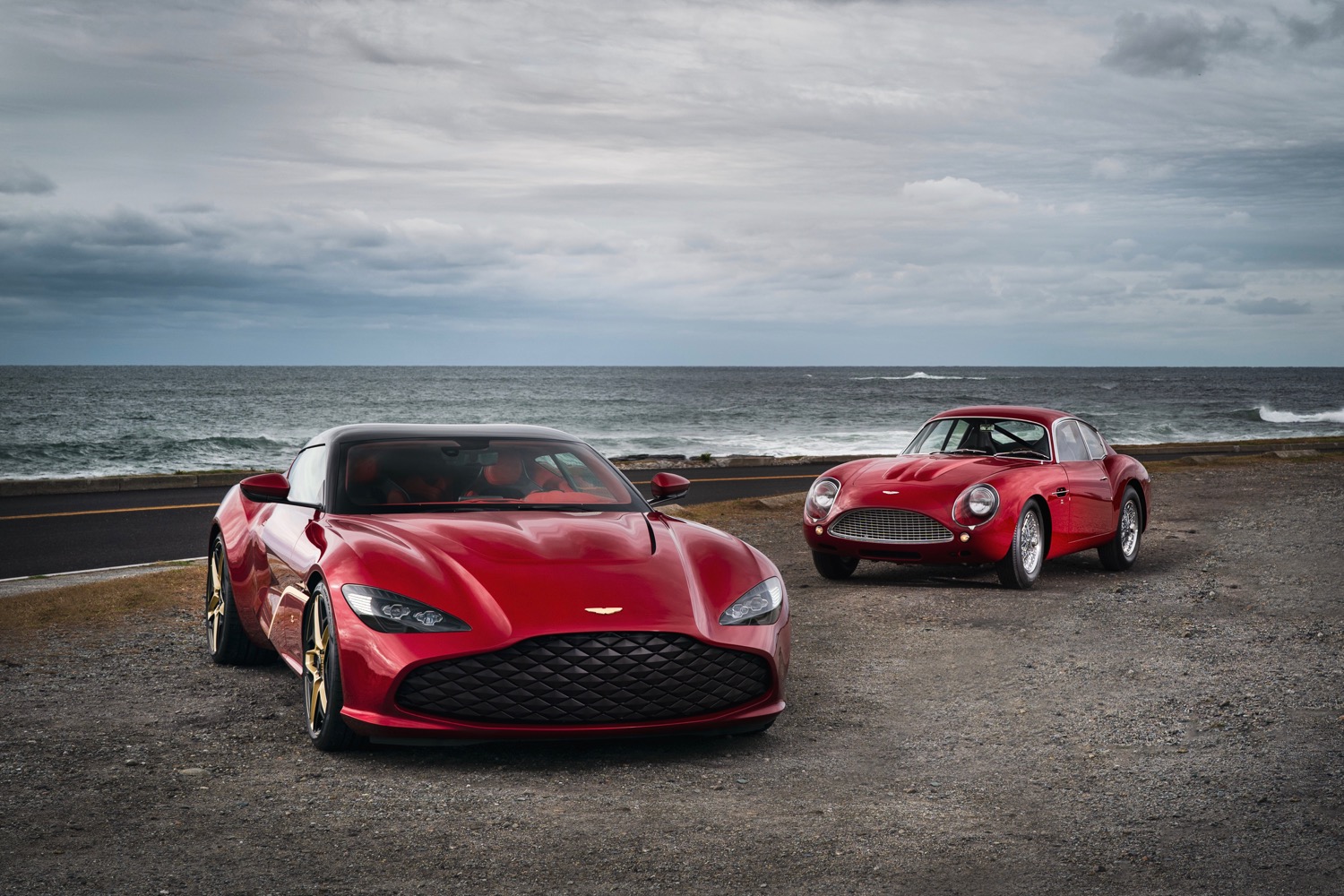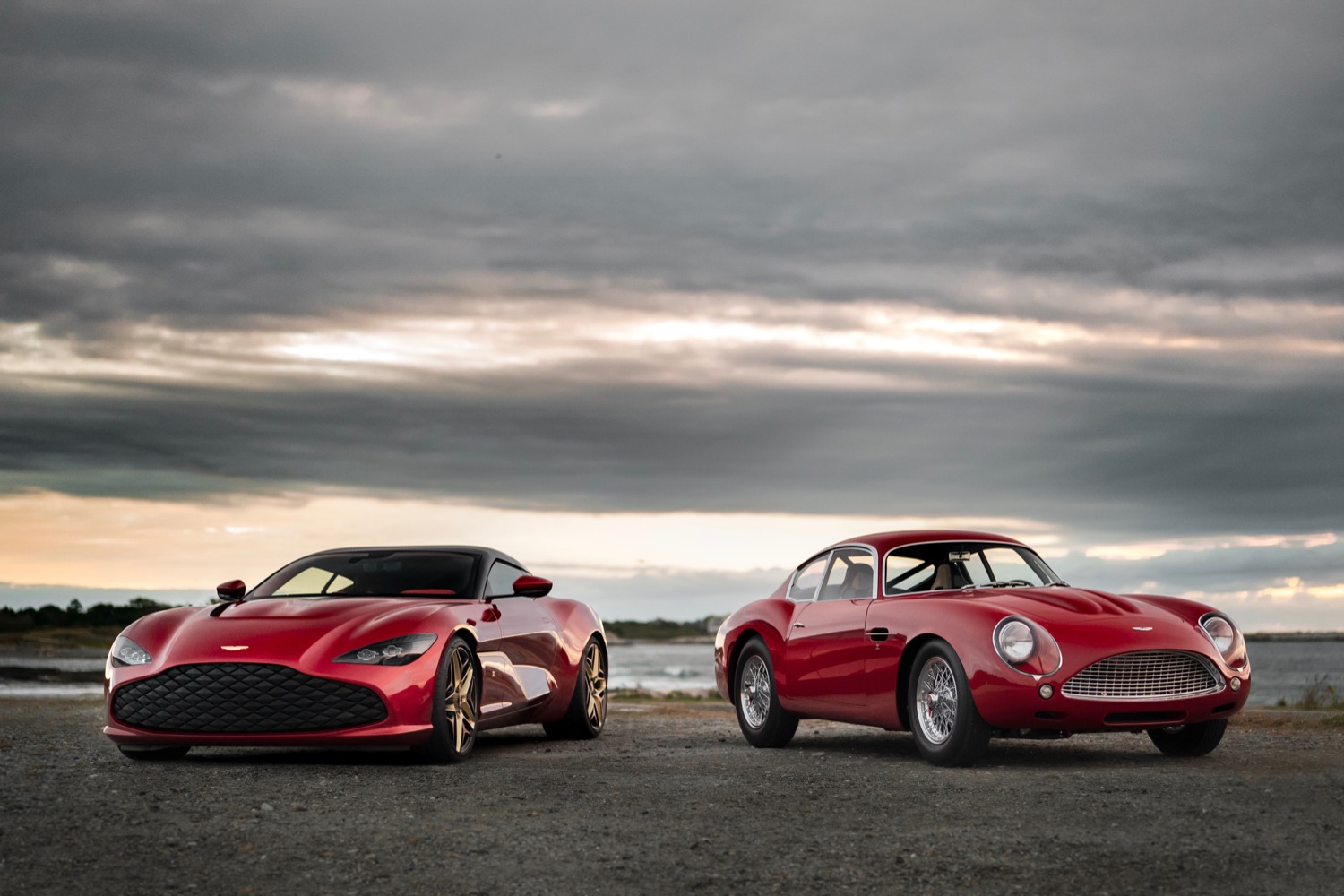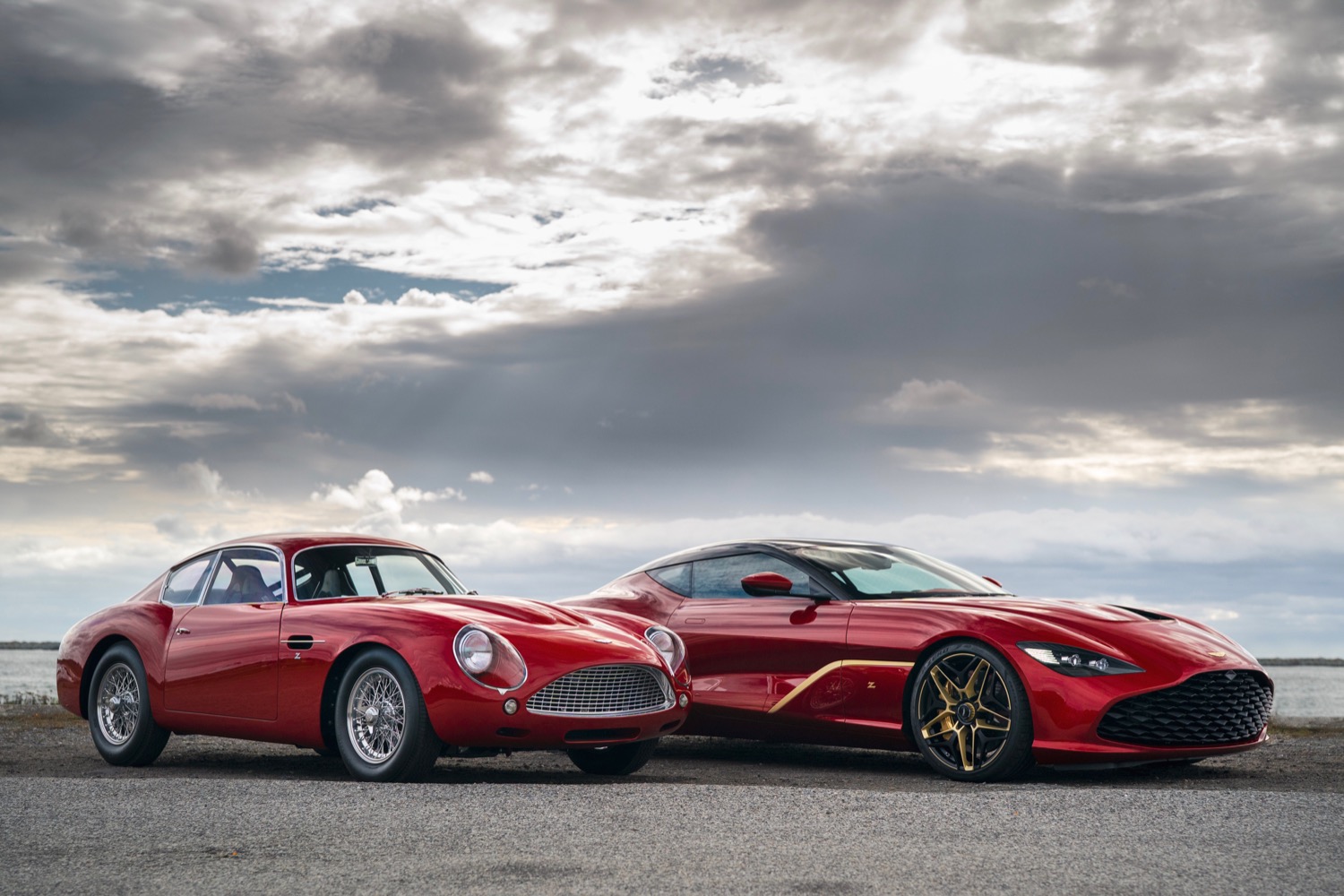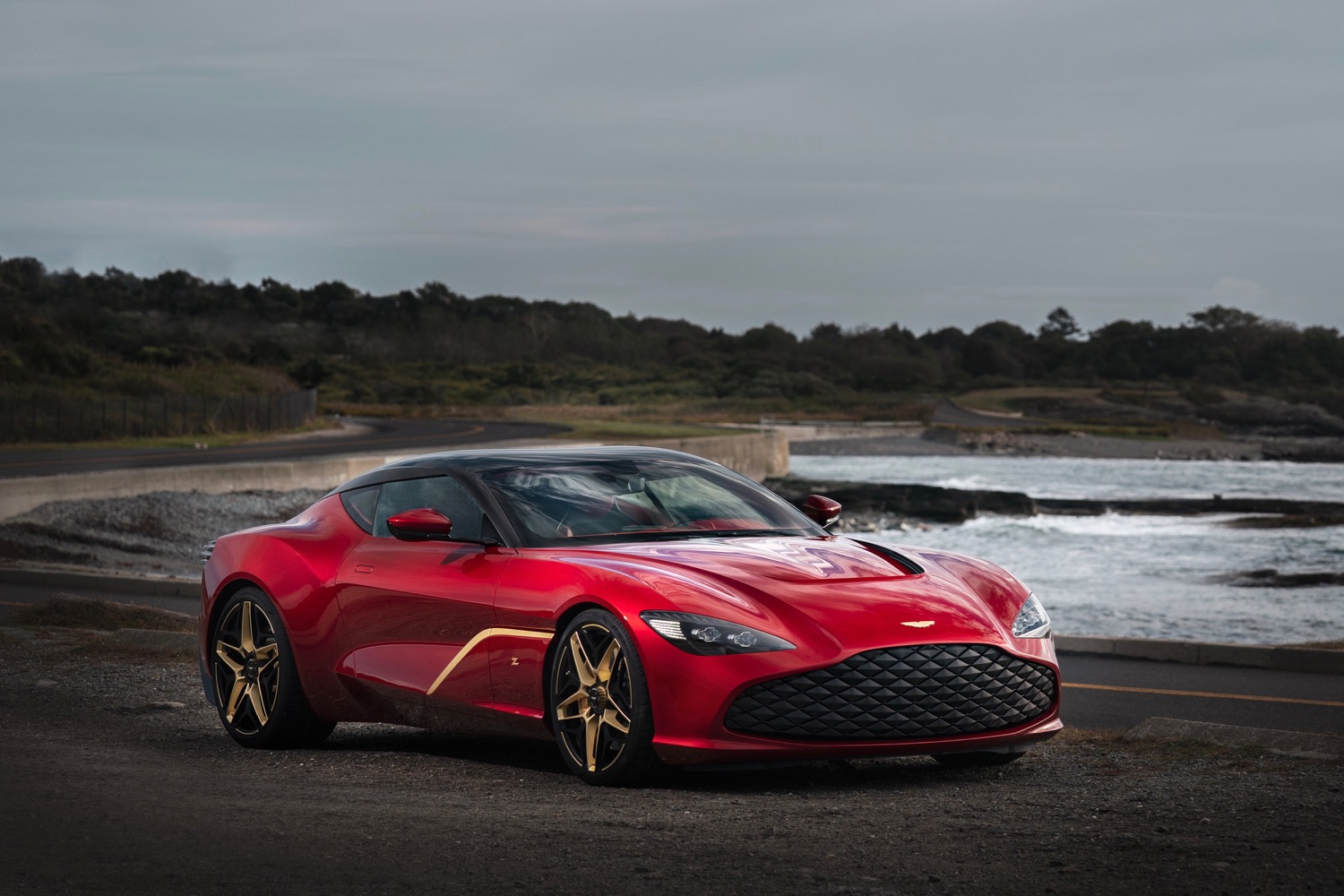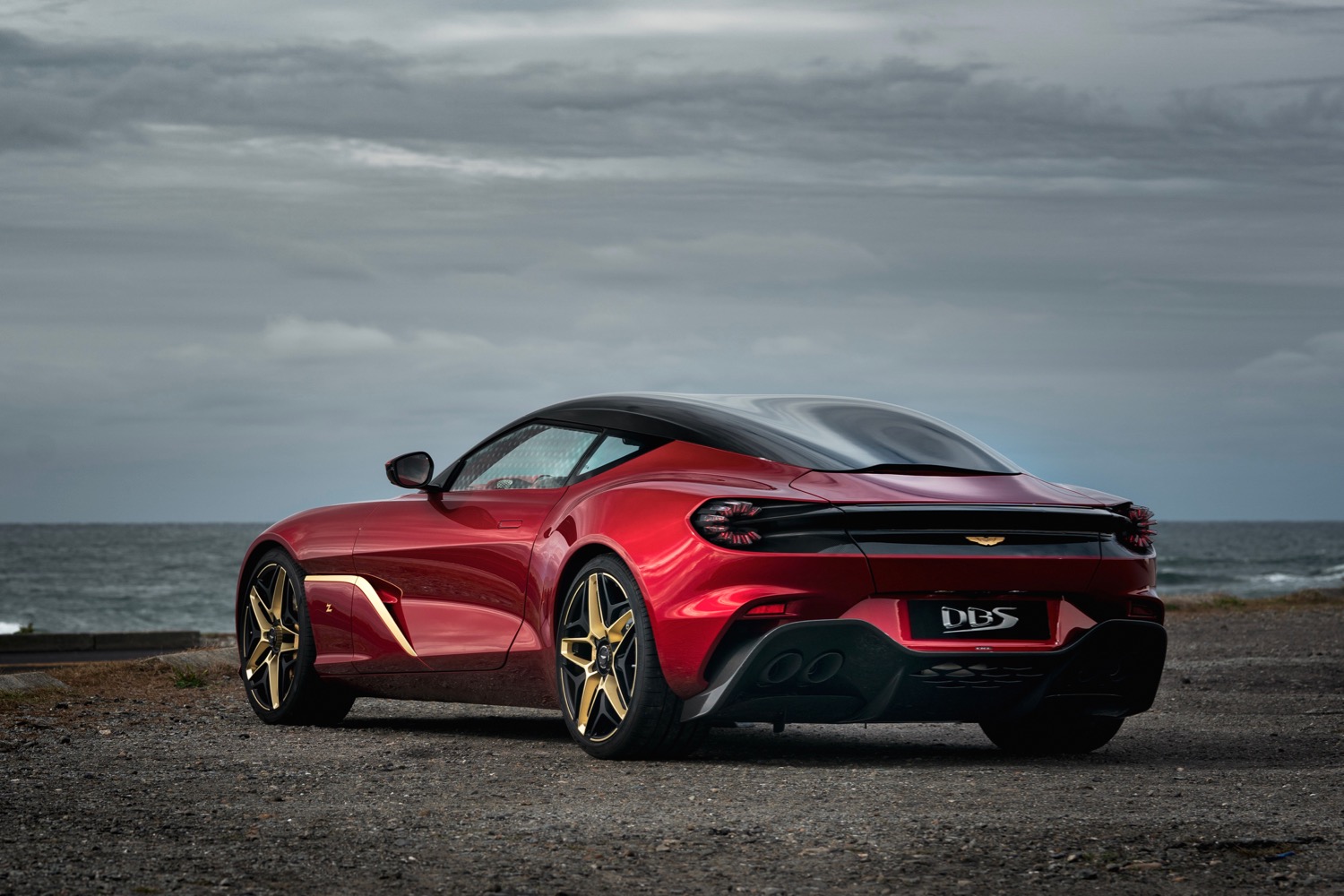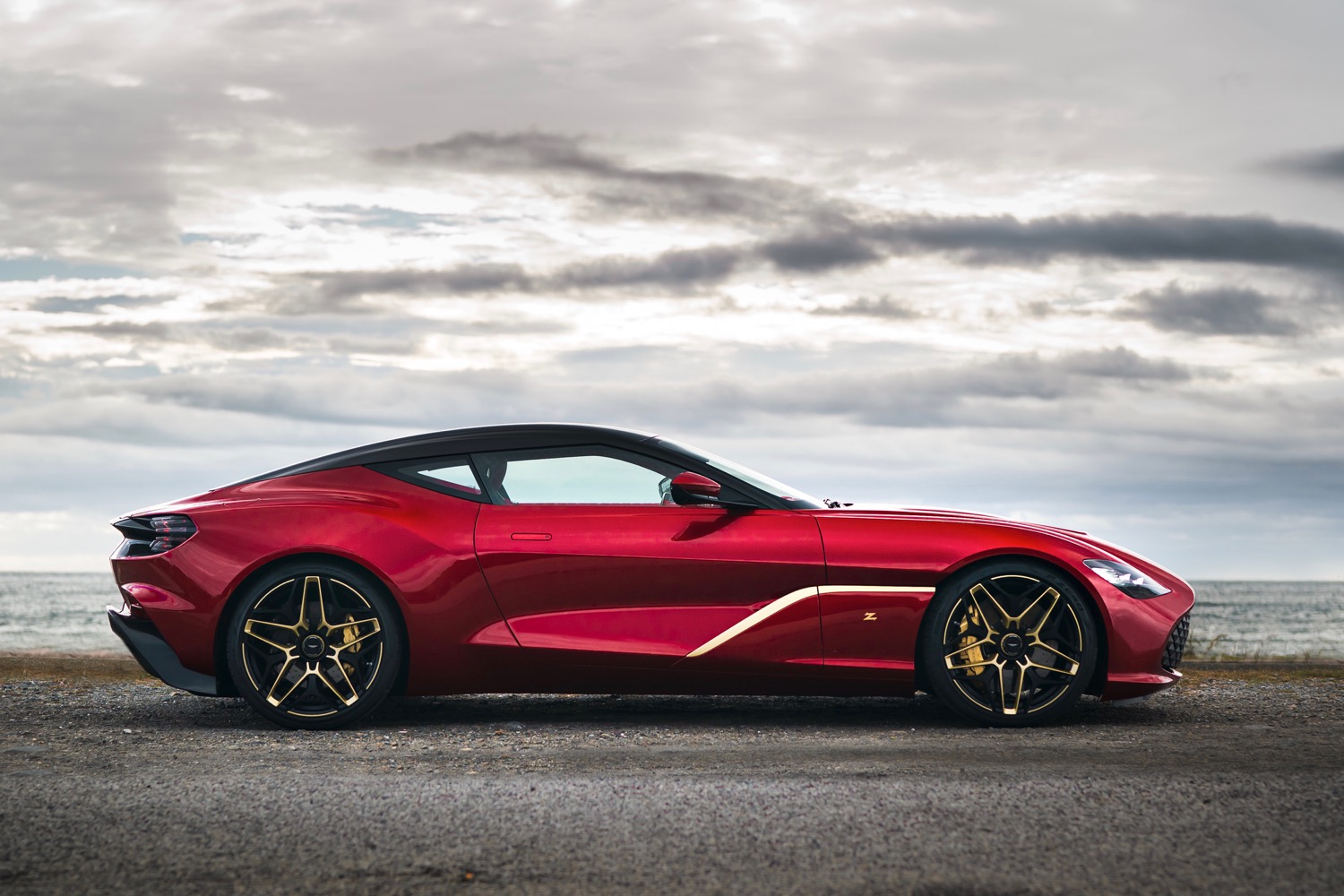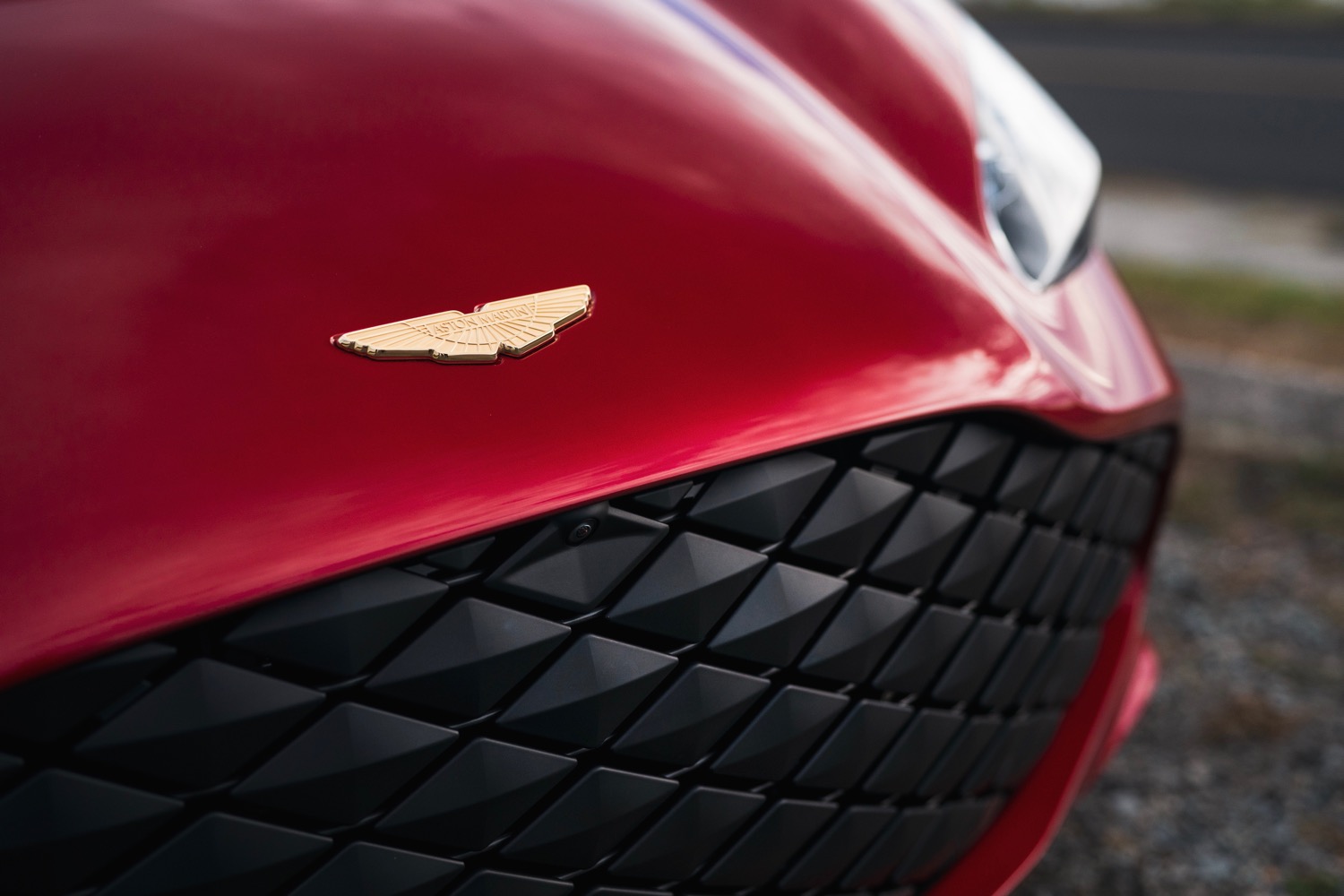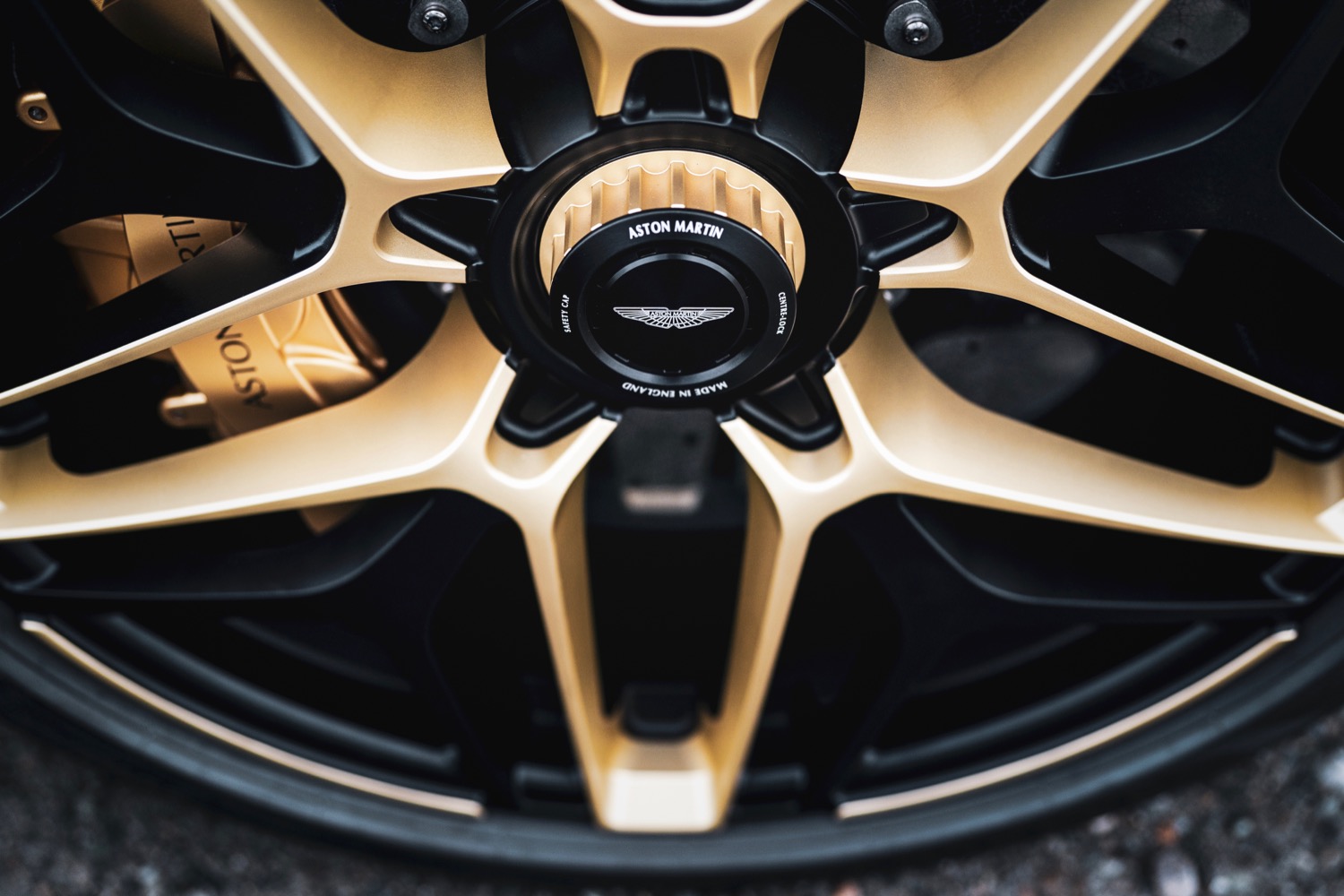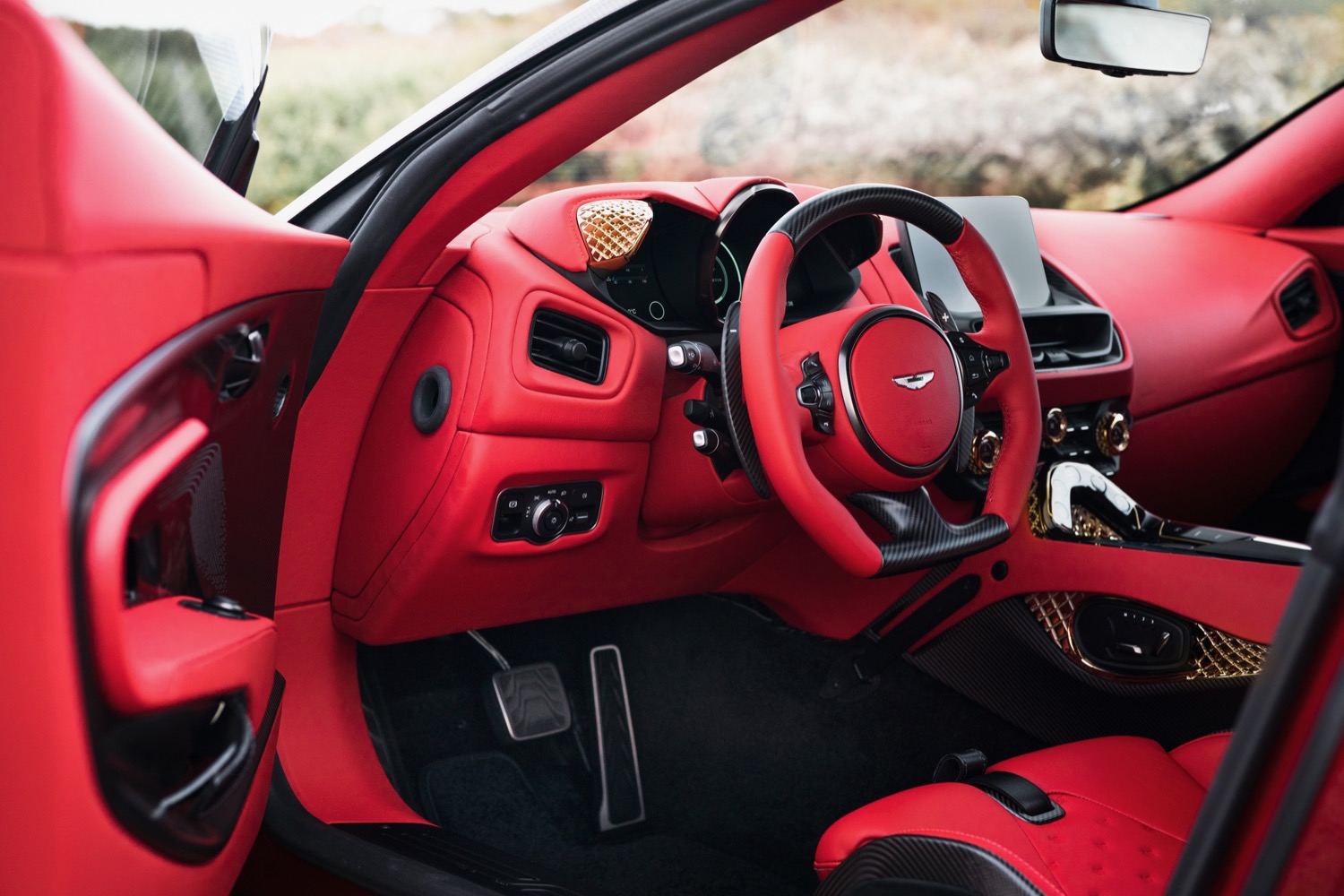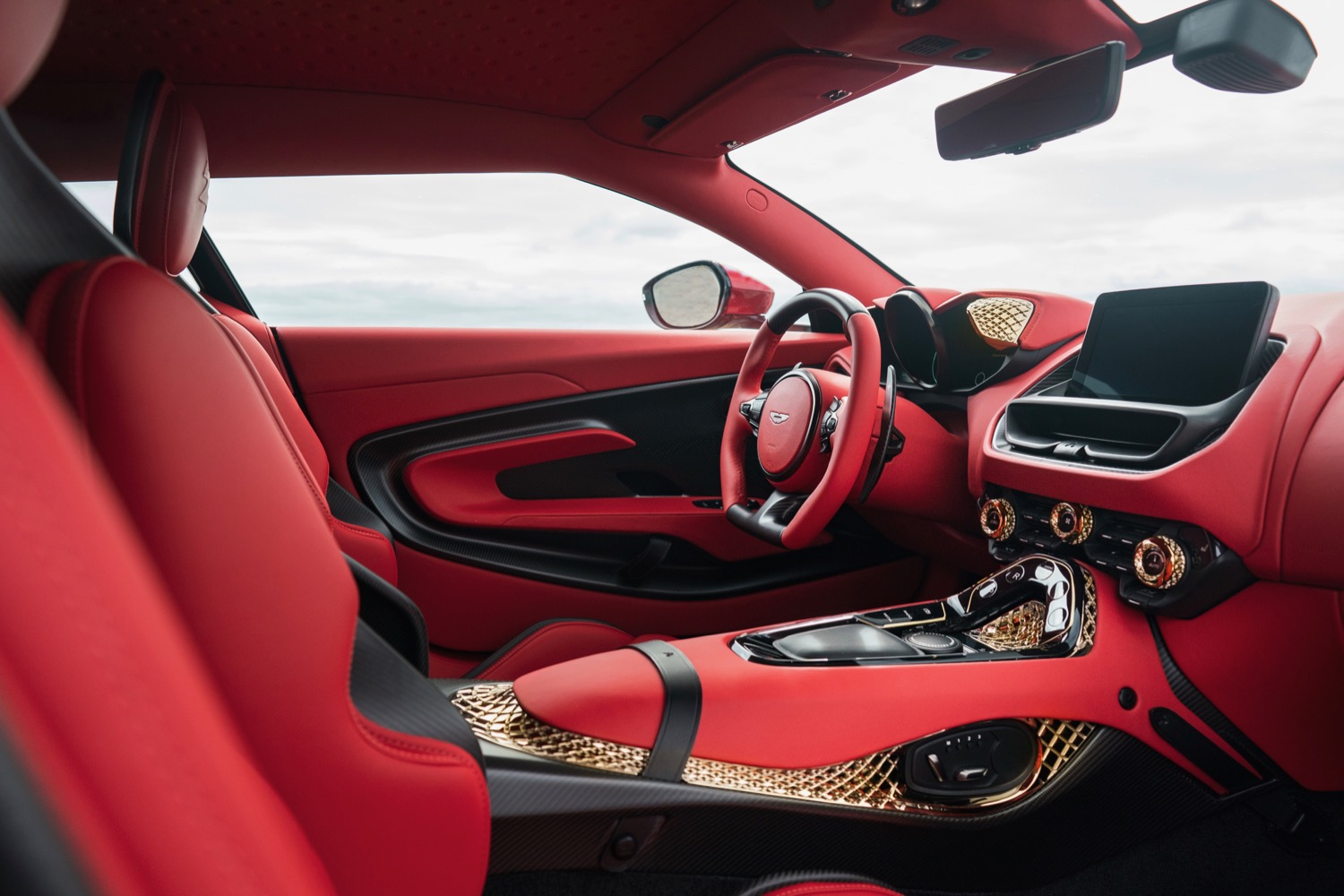How’s this for a package deal? The Aston Martin DBS GT Zagato is a special edition commemorating one of Aston’s all-time great cars — the DB4 GT Zagato of the 1960s. But to get the DBS GT, you have to buy the DB4 GT, which Aston is bringing back for a limited run. Just 19 pairs of cars — which Aston calls the DBZ Centenary Collection — will be built, priced at $7.3 million.
The DBS GT Zagato is based on the DBS Superleggera, but looks very different. That’s where the “Zagato” part comes in. Zagato is an Italian coach builder that has been working with Aston for decades. Zagato worked its magic on the DB4 GT in the 1960s, and it did the same with the new DBS GT. The “double bubble” roof (a Zagato trademark), round taillights, and 18-carat gold accents set the DBS GT apart from the Superleggera.
The interior features carbon fiber trim pieces, as well as some 3D-printed metal parts, which Aston claims are a world first. Buyers can choose carbon, aluminum, or gold-coated stainless steel. The latter requires 100 hours just to print, and is then hand polished and processed by craftspeople at the factory, according to Aston. The automaker believes 3D printing represents the next evolution of personalization, since it allows customers to commission one-off parts with a unique finish or shape.
The DBS GT Zagato uses the same 5.2-liter, twin-turbocharged V12 as the DBS Superleggera. But the Zagato boasts 760 horsepower (the same as a Ford Shelby GT500 Mustang), compared to 715 hp for the Superleggera. In both variants, power is sent to the rear wheels through an eight-speed automatic transmission, which is mounted in the back of the car to improve weight distribution.
To get a DBS GT Zagato, you also have to buy a DB4 GT Zagato. Unveiled in 1960 to challenge Ferrari on the world’s racetracks, the Zagato was a lighter, more aerodynamic version of the Aston Martin DB4 GT. As with the original, the modern Zagato “continuation” model (Aston prefers not to call it a replica) will have hand-formed aluminum bodywork and a 4.7-liter inline-six engine making 390 hp. Just 19 original DB4 GT Zagatos were built, so the modern production run will double the number of cars in existence.
While the DBS GT Zagato will be street legal, the DB4 GT Zagato it’s sold with will be for track use only. Aston Martin can’t certify a new car built from a 1960s design for road use. That hasn’t stopped Aston from bringing back other old designs, though. It previously built a batch of 25 DB4 GT (non-Zagato) “continuation” cars, and plans to resurrect James Bond’s DB5 — complete with gadgets.
Editors' Recommendations
- Want to see Snoop Dogg in AR? You’ll have to buy a bottle of his new wine
- If you want to drive this electric Jaguar, you’ll have to play Gran Turismo
- Aston Martin’s first SUV will share an engine with its sports car siblings
- Aston Martin will revive James Bond’s DB5 at a price only Goldfinger can afford
